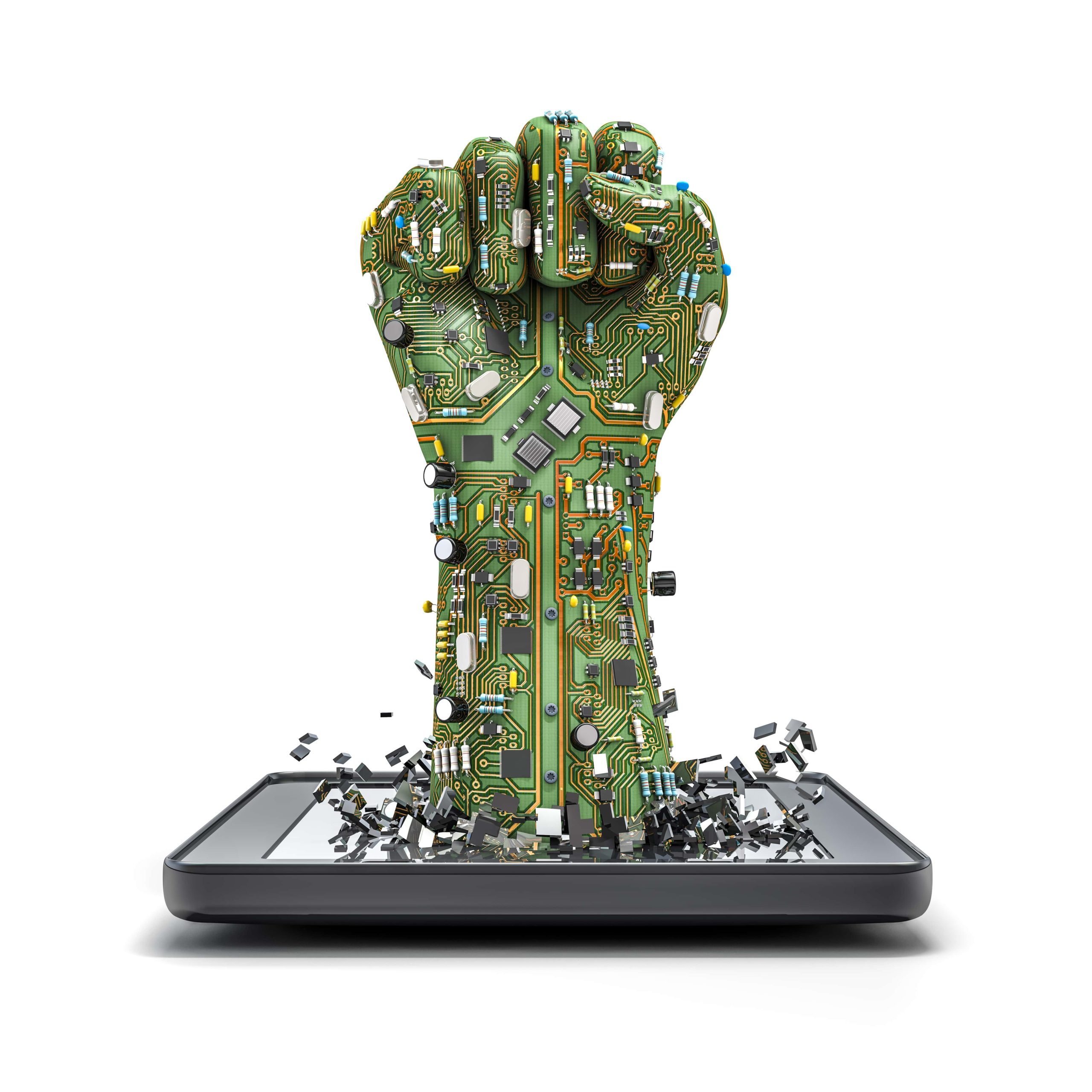The Ten Commandments of Digital Transformation
Jaspreet Bindra
h3 { margin-bottom: 10px;}A couple of years back, Gartner made a fairly startling statement: By 2017, 20% of all market leaders will lose their number one position to a company founded after the year 2000, because of a lack of digital business advantage.
The more startling point is that some of this is coming true. In late 2015, Airbnb had a million and a half rooms available for rent, and their bookings were projected to double to 80mn over the year before. The world’s largest hotel chains – Hilton, Marriott and Intercontinental – have 700,000 rooms each worldwide. Soon, Airbnb will have more rooms than these three combined, and this is without owning a single one! Already, its reported market cap ($50bn) is more than the combined market cap of the three largest hotel chains. The same story is true across many categories, whether it be Uber in personal transportation, Youtube in video, or soon Amazon in retail.
Needless to say, this makes the CEOs of ‘legacy’ non-digital companies nervous, and more than a tad envious. Many of them, across industry, size or geography, seem to have one common burning desire: to become ‘one of them’. To do this, they need to undertake upon a journey of ‘digital transformation’ – the use of technology to radically improve performance or reach of their business.
It can be a long, painful and convoluted journey, and while embarking on it, it is good to keep these Top Ten Commandments in Mind:
1. Leadership Vision and Commitment is Key
Unlike with most stories, in this one, the best place to start with is the end. The CEO must have a clear vision of what she wants her business to become at the end of the transformation, and be able to articulate the same; It will not happen if the they are not completely bought in. One of the best example of this is probably GM, whose vision says: ‘Over the past 100 years, GM has been a leader in the global automotive industry. And the next 100 years will be no different….’ Mary Barra and her management has taken this to heart, and GM is transforming like no other- the $500mn infusion in Lyft to enter the fleet platform space, their electric vehicle program, the GM OnStar digital experience and multiple other things to re-invent and transform the company.
2. The Transformation Needs to Create Business Value
There was a time companies fell over themselves creating their own dotcoms; it was the fashionable thing to do. Until, suddenly one day it was not. It is surprising how many CEOs want to become digital, because everyone is doing it, or because it has great ‘PR value’ or because the kids want them to! Needless to say, these are absolutely the wrong reasons to go digital. The digital transformation exercise has to impact real metrics – revenue, profit, cost, customer engagement, retention or repeat buying – and therefore impact business in a positive and quantum manner. And, we should know what metrics are we trying to change, and by how much, right up front; else, the whole exercise is not worth doing.
3. Think the Customer Journey
Most of our organisations are built vertically into functions – Marketing, Sales, Production/Operations, Customer Service, etc. The customer, on the other hand, traverses our organisation horizontally. She gets wooed by marketing, then buys something through sales, gets product or service delivered by operations and hopefully gets served by customer service. Each function owns the customer for periods of time, and then ‘hands her over’ to the next function. In the digital world, we need to build the organisation around her journey, and use her digital footprint and data to own and manage her journey better. That is why digital transformation calls for a very fundamental relook and change in business processes and organisations.
4. Make the Front-end and Back-end talk
The digital front end (website, app, store, etc.) and the backend (CRM, ERP, billing systems, etc.) need to synch with each other. There is no point building a killer engagement app for smart phones, without it being integrated seamlessly with the Big Iron at the back. This is the ‘uncool’ part of the equation, the most common point of failure of your digital story. It is also where most hard work has to happen. While Digital is not IT, IT is the backbone of all digital execution.
5. Strive for Product-Market Fit
Very curiously, this concept brings us back to the much disparaged marketing adage: ‘Build a better mousetrap, and the will come’. Digital products are often about building great mousetraps, and the product-market fit concept is about building the perfect mousetrap – one so beautiful and useful, that all the mice in the world will unhesitatingly come running to the trap. Conventional wisdom talks about listening to the customer, and creating a product which is the best possible fit for her needs. After it is built, you pilot it, and then you cannot change it until the next version or model, so you sell the hell out of it – by advertising, promoting, discounting, etc. Digital wisdom is different – create a product that ‘just works’, put it out, take continuous feedback, and iteratively tweak the product continuously (through tools like A/B testing), until you arrive at the best product-market fit. After that, the product sells itself. Think Gmail – 5 years in iterative beta, until Google got the best product market fit. And then the mice came running.
6. Partnerships, Partnerships, Partnerships
Much like the hotel business is all about ‘location, location, location’, digital business is about partnerships. In legacy business, competitors are arch enemies, to be crushed and obliterated, their market shares stolen and their brands annihilated. In the digital world, you partner with everyone – your friends and your foes. Google, Microsoft, Apple. Facebook, Amazon compete bitterly with each other publically; but behind the scenes they are cooperating even more furiously. Windows products are on the Google Play Store, Microsoft’s software is sought after on the Mac, everyone uses each other’s cloud. In the digital world, you leverage off each other’s strengths, and ‘make’ larger markets, rather than steal each other’s market shares.
7. Rethink Business Models
To paraphrase Bill Clinton’s famous election-winning line, “it’s the business model, stupid”. Digital transformations are, in the end, about two holy tenets, and one of them is about the business model, which is the way you make money in your business. To continue the Airbnb example, Marriott spends a lot of money building fancy hotel rooms, and then makes even more over a few years, by renting them out. Airbnb upends this model by using rooms which already exist, renting them out and sharing the spoils with the owners of the room. Similarly Uber makes its money by leveraging the existing car and driver base, rather than setting up their own fleet. Marketplace ecommerce businesses like Alibaba do something similar. The traditional resource and capex heavy business models are being replaced by ‘platforms’ – where existing resources, sophisticated matching algorithms, connected devices, and AI-fuelled data crunching come together to create enormous business value. Most businesses can be ‘platformised’, and this is one of the most powerful ideas behind digital transformation
8. Enable a ‘Cultural Revolution’
Digital is not about technology, or cool devices, cloud data centres, or even long-haired bros high-fiving each other in co-working spaces. It is really about the innate culture of the organisation – the ability to ‘fail fast’, tolerance for dissent, encouraging tinkering, creating products that just work, the need for speed, super-fast decision making. As Mark Zuckerberg declares on every wall in the Facebook office – ‘Break things, and move on’, and ‘Done is better than perfect’. In many ways, the CEO needs to bring in a ruthless Mao-like cultural revolution to the work place, and lead the charge herself.
9. People uber alles
Culture is all about the people. This is the second of the two holy tenets of digital transformation, the other being the business model. Your people need to buy in, since it is going to be a long process, a fundamental change. They need to either lead this with you, or follow you, or unfortunately get out of the way. This is not about firing hordes of people, and getting a newer, younger, savvier lot. It is about setting a vision, telling people why, painting the future, and then over-communicating the hell out of it. Most people will be happy to change, and be retrained: they know what is happening around them. Some will not be, and they need to go and new people brought in. Many times you will need to bring in a Chief Digital Officer – someone who will own the customer journey horizontally across the organisation, and lead the digital change
10. Patience
It is going to be a long, trying passage, this digital transformation thing. There will be stomach-churning ups and downs, and severe doubts and disruptions along the way. The primary quality needed of a CEO to traverse this path is not mercurial brilliance, or a driving ruthlessness or even faultless execution, but sheer, limitless patience. Because, as Michelangelo remarked: “Genius is eternal patience”.
The author publishes A fortnightly column on technology In The Mint which is a leading Indian publication
For more details Click here
FAQ
Digital transformation is the process of using digital technologies to create new or modify the existing business processes and customer experiences so as to optimize and streamline internal processes while meeting the changing market requirements and addressing the evolving expectations of their customers. The impact of digital transformation on companies can be huge.
Digital transformation is creating an unprecedented opportunity for innovation across all industries and seeing a total reinvention of products, services and experiences in the market. It creates an extraordinary room for growth in all industries and is becoming a strategic necessity to enhance organizational performance, boost revenue, be more adaptable to market customer demands and achieve maximum asset performance and efficiency.


